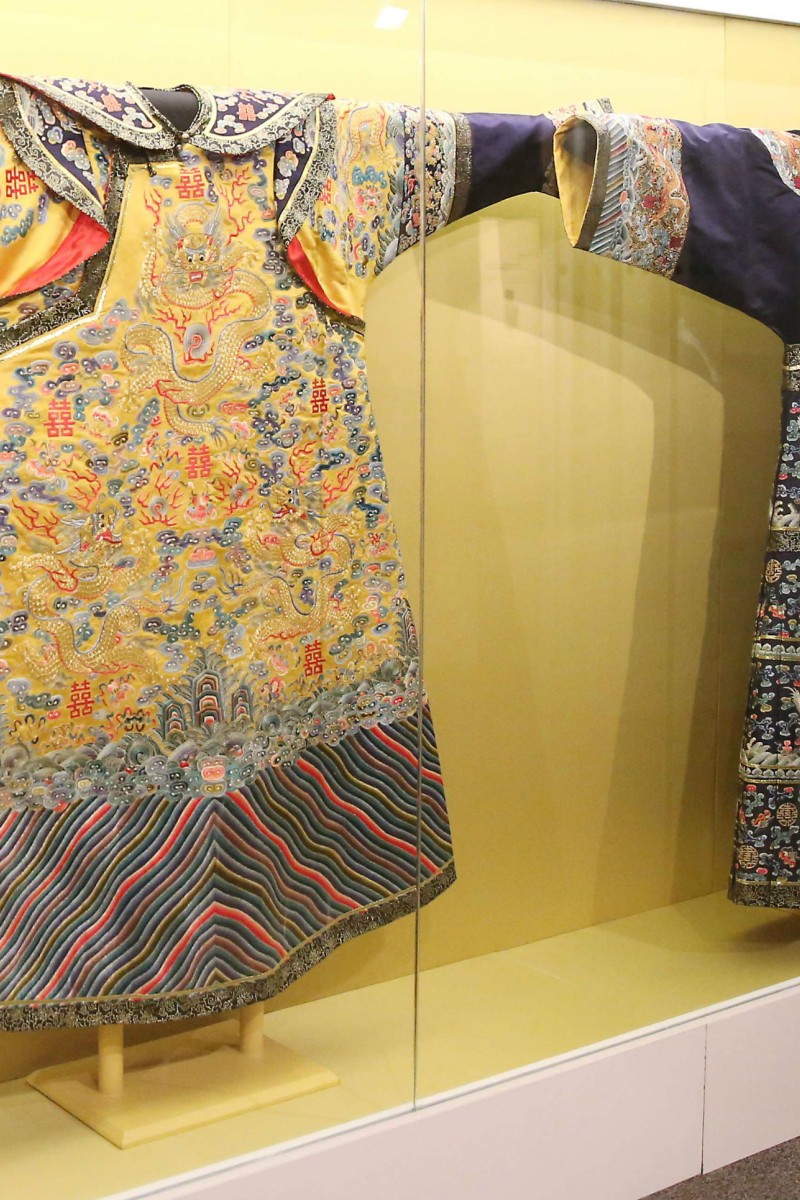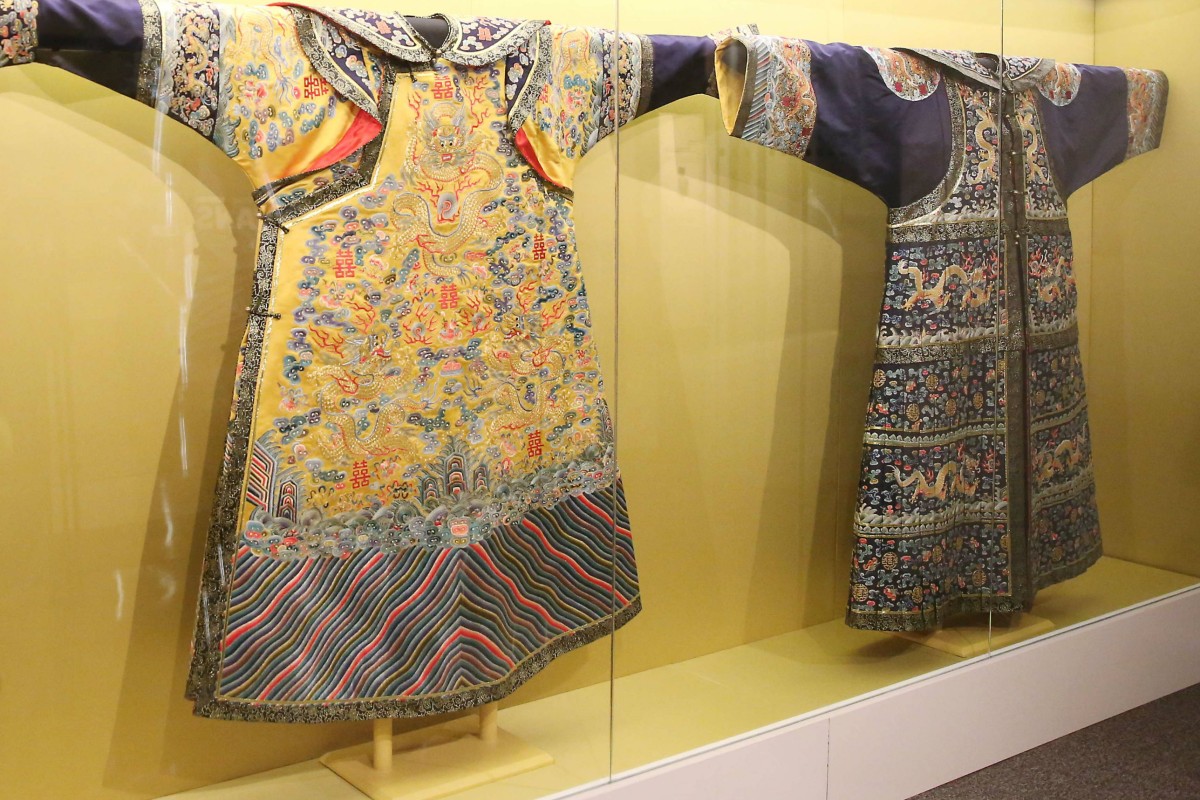
HK Coastal Defence Museum unveils the secrets of Henry Puyi - China’s last emperor
A new exhibit explores the ups and downs in the life and times of a little-acknowledged character in Chinese history
 Replicas of the ceremonial wedding robes worn by Puyi (left) and his wife Wanrong.
Replicas of the ceremonial wedding robes worn by Puyi (left) and his wife Wanrong. Henry Puyi may have lived his final days as a commoner, but his life was anything but ordinary. China’s last emperor, Puyi ascended to the Qing dynasty throne at age three, only to be stripped of his title three years later, after the Wuchang uprising that triggered the 1911 revolution. But it wouldn’t be the last the world would hear of Puyi.
A new exhibit at the Museum of Coastal Defence looks at his life, from royalty to traitor, and from war criminal to commoner. “From Son of Heaven to Commoner: Puyi, the Last Emperor of China” presents all these things but reminds us that through it all he was a real person with desires and a personality.
Despite being removed from the throne, he still enjoyed the life of an emperor within the confines of the Forbidden City, where he was given elite education. His English tutor, Reginald Johnston, influenced his tastes, turning him into a fashionable man with a Western lifestyle. This is reflected in the many artefacts on display that are of Western origin, including gramophones, eyeglasses, cameras and telephones – some of the trendiest objects of the time. In many pictures he is seen wearing Western dress.
That life came to an end in 1924, when he was evicted from the palace in a coup. Zhao Jimin, deputy director of the Museum of the Imperial Palace of the Manchu State in Changchun, which co-organised the exhibit, said: “Puyi was well educated and an eloquent speaker. He survived the fall of his dynasty not only with luck, but talent as well.”
After the coup he moved to Tianjin under the protection and surveillance of the Japanese. When they invaded China in 1931 and established the “false state” of Manchukuo, Japan placed him back on the throne as a puppet emperor.
But when Japan lost the second world war, Puyi was captured by the Russians. He spoke as a witness against the Japanese in a war crimes court and was returned to the newly founded PRC in 1950, where he was sentenced to re-education and retraining at the Fushun War Criminals Management Centre. When he was released 10 years later, his royalty days were over. He lived as a commoner until 1967, when he died, aged 61, in the midst of the cultural revolution.
His story is told not only in history books, but in movies as well. The Last Emperor, which was the first feature film ever shot on location in the Forbidden Palace, won nine Oscars. Music from the movie is used in the exhibit’s video clips.
The exhibit also includes a list of books about Puyi that are suitable for all ages, and a cinema playing documentaries on his life. They’ve even got a photo booth, where you can dress up like Puyi and get a picture, either on the throne wearing the royal dragon robes, or in a jail cell dressed in a prison uniform.
During his lifetime, Puyi saw the fall of dynasties and the rise of nations. According to Zhao: “Most ‘last emperors’ die, but Puyi managed to survive. He adapted in his cooperation with the Japanese, then he changed his ways under the PRC and became a citizen,” she says. “I hope youth today can learn to ‘read the times’ and adapt. We can see from history how we should act under similar circumstances.”
The exhibition runs until February 13. Admission is free. Visit the museum's website for more details
